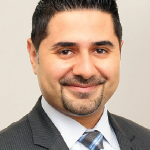
vectorfusionart; Thomas Andreas / SHUTTERSTOCK.COM
SAN DIEGO—Increasingly, technological advances are placing new tools into the hands of office-based rheumatologists. And they don’t have to cost a lot in capital equipment outlays by the medical group, because some of the best advances can be accessed via the device that is already in most doctors’ pockets, their smartphone.
Smartphone technology gets more powerful every year and is far ahead of some of the technical equipment already used in rheumatologists’ offices, said Suleman Bhana, MD, a rheumatologist in the physician-owned multispecialty group, Crystal Run Health Care, Middleton, N.Y., at the 2017 ACR/ARHP Annual Meeting Nov. 3–8. Combining the smartphone with healthcare is leading to a tech revolution, he said. At its best, this technology is affordable, easy to use, fast and able to demonstrate improved patient outcomes.
An example is nailfold capillaroscopy, the most relevant way to distinguish between primary Raynaud’s phenomenon and Raynaud’s that is secondary to another connective tissue disorder, as well as being useful for the classification of systemic sclerosis.1 Technology offers a relatively inexpensive alternative to the videocapillaroscope and stereomicroscope. An OlloClip MacroPro Lens Camera for the iPhone, retailing for about $80, clips onto the iPhone, offers 21 times optical magnification and takes pictures and video. Thermal imaging, a highly reproducible technique for quantifying degree of inflammation in rheumatoid arthritis, is also accessible to the smartphone, Dr. Bhana said.2,3 Thermal imaging cameras, such as the FLIR ONE, can attach to a smartphone and generate a dual image from thermal and standard cameras. It distinguishes disease severity and can be easier to read than ultrasound.
How can rheumatologists access this technology? You don’t have to be a tech nerd, he said. “It’s about thinking creatively in your daily work life.”

Dr. Bhana
Technology adoption via smartphones is driven by doctors asking the question: Is there a way to adapt this technology to my practice? It’s about trying something new, instead of waiting for a manufacturer to announce the application.
Other technology applications highlighted by Dr. Bhana include cell phone adapter mounts for microscopic imaging; software for patient education such anatomical apps; and patient and physician applications of medication and mindfulness-based stress reduction. Patients already using smartphone technology will find the doctor’s use of it empowering.
“One of the things that excites me the most is the growing use of virtual reality with the new VR [virtual reality] goggles. It’s fascinating,” Dr. Bhana said. VR refers to a computer-generated, immersive, 3D environment using depth-of-vision goggles, audio and motion control sensors. In the context of the current opioid overdose epidemic and the problems that have resulted from trying to manage chronic pain using opioids, VR offers an effective adjunct to pain management and an opportunity to prescribe fewer opioids.
The experience of pain is often driven by psycho-social issues on a deep level in the patient’s life; virtual reality can promote mindfulness and relaxation and reduce the perception of pain by absorbing and diverting the person’s attention away from the pain, Dr. Bhana explained. “If we can target nonpharmacological approaches to pain, it benefits everybody. And a lot of that technology is available today. You can get VR goggles at Amazon.com for $35 and subscribe to a VR app for $10 a month.”
For the physician, principal barriers to using technology are time, reimbursement and billing concerns.
For more information about the tech revolution for rheumatologists, contact Dr. Bhana via email.
Larry Beresford is a freelance medical journalist in Oakland, Calif.
References
- Cutolo M, Sulli A, Secchi ME, et al. Nailfold capillaroscopy is useful for the diagnosis and follow-up of autoimmune rheumatic diseases. A future tool for the analysis of microvascular heart involvement? Rheumatology (Oxford). 2006 Oct;45(Suppl 4):iv43–iv46.
- Sanchez BM, Lesch M, Brammer D, et al. Use of a portable thermal imaging unit as a rapid, quantitative method of evaluating inflammation and experimental arthritis. J Pharmacol Toxicol Methods. 2008 May–June;57(3):169–175.
- Frize M, Ogungbemile A. Estimating rheumatoid arthritis activity with infrared image analysis. Stud Health Technol Inform. 2012 Aug;180:594–598.


